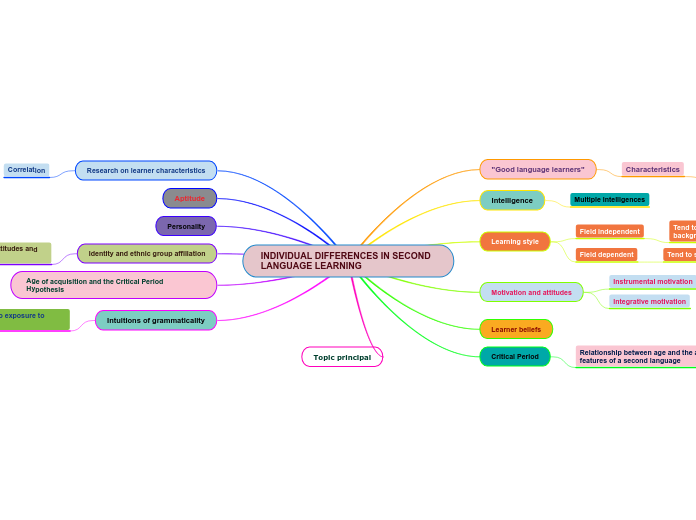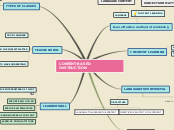EQAO
What I learned in Teaching, Learning, and Development
Individual Differences-Intellectual Abilities and Challenges
use the Wechsler Intelligence Scale for Children to determine intellectual abilities and differences,
Special Education Considerations
Low-incident Expectations: strong disabilities
IEP: individual education programs
High-incident Expectations: mild disabilities
Consider making a cognitive ability profile
Move from segregated classrooms to integration with other students; segregation could cause more harm than good.
Teachers should plan how they will include students of various learning capacities
Social-Cultural Expectations
Teachers must develop a unique perspective to be able to be sensitive learners of all backgrounds
Aboriginal Education
Reasons why some of those of aboriginal decent may struggle in school:
Lack of qualified teachers with a strong degree of proficiency in aboriginal studies
Poor home-school communication
Lack of parental support
Difficulty transitioning from elementary to secondary schools
Moving from school to school
Early school failures
Parenting styles
authoritative parenting
permissive parenting
authoritarian
parenting
Culture create diverse learners and the need for differentiated instruction. Aspects include:
Socio-economic status
Socio-economic status has a bigger impact on academic achievement than any other aspect
race
Gender
End of the School Year
Standardized Testing
Types of testing
Norm-referenced
Student performance vs. other student performance
Criterion-referenced: Student performance vs. Established criteria
Cons
imperfect instruemtns
cannot evaluate problem-based leanring
wide scale comparisons do not consider cultural difference
Never truly standardized
Slowing in returning results
Not valuable to student learning as students teach the test
Too frequent
Pros
Assess strengths and weakness of the system
Allows province and country to reassess curriculum
Opportunity for comparison
Planning for the
upcoming school year
Use a 'top-down' approach when planning
Determine daily lesson plans
Break down curriculum into units
Determine curriculum for the year and term
Create diagnostic assessments to evluate where your students are at
Plan summative assesments when planning daily lesson plans
make info
easier to remember
interesting
save time
:Good planning includes considering
How and when students will be assessed
The learning environment
Methods and materials that will be used
The order of the material presented
What will be taught
Knowing Your Students Know
Assessment serves different purposes at
different times: it may be used to find out
what students already know and can do; it
may be used to help students improve their
learning; or may be used to let students and
their parents know how much they have
learned within a prescribed amount of time
Understanding by design
audio
Kinesthetic
diagnostics will help determine what and how to teach
provide diagnostic assessments to know how
visual
"Repetition is the mother of learning"
go over the map
put your mind to work
recall as many details as you can about the keywords you added
Making Instructional Decisions
consider blooms taxonomy when deciding how to teach and how to evaluate learning
Consider backwards design
use diagnostic assessments
Motivating students
teach them effective stratigies
challenge them
help them to know that you care
Subtopic
types of instruction
project-based
student problem solving
direct instruction
Select-organize-integrate
3)integrating the organized information with
prior knowledge
2)organizing the selected information
1)selecting relevant information
Cognitive strategies
Metacogintion
Universal Instructional Design
Establishing a Positive Learning Environment
Behaviour management
use positive rewards instead of negative consequences
use Dynamic classroom management
Learning Environments influence
student/teacher relationship
student self-regulation
student feeling of belonging
student confidence
student self-efficacy
student health
class behaviour
academic achievement
Stop testing memorization; test skills
Stop quizzing memorization; quiz skills!
Cognitive, Behavioural, Social, and Constructionist Views of Learning
Domain-specific learning
Assimilation and Accommodation
Constructivism, students constantly construct their own
Knowledge and understanding.
Behaviour: Shaped by environment
Operant conditioning: Skinner's rats and pigeons
Classical Conditioning: Pavlov's Dogs
Developmental Differences
Piaget's four stages of cognitive Development
Formal Operations
Concrete Operations
Preoperational
Sensorimotor
executive cognitive functioning
Organize, reflect, and co-ordinate thinking to achieve more efficient processing outcomes.
Development includes
look for connections
Cognitive
Social
Principles of Development
Development base on principles of nature and nurture
Different people develop at different rates
Quantitative and quantitative changes
Gradual
Orderly and logical progression









